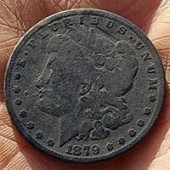Leaderboard
Popular Content
Showing content with the highest reputation on 08/11/2018 in all areas
-
3 points
-
This is my idea of a great video. Show me the features of the detector and how they work. I want to know how the detector sounds. Leave out all the "trying to prove stuff" parts. Just show what the machine can do or possibly not do. I also like that some basic tips were thrown in. The only part I found confusing was the tone id described as low tone meaning low conductive and high tone being high conductive. Gold is a low conductor. I believe this should have been discussed as low tone meaning ferrous, and high tone meaning non-ferrous. Page 12 of the GMK Advanced Guide: "Tapping the Music button toggles between two different audio modes. With the Music Icon ON, the GM24k will produce 2 distinct beeps, one high and one low, for different types of targets. The higher tone has a better chance of being a non-ferrous target (gold, aluminum, silver, brass, etc.), and the lower tone has a better chance of being ferrous (iron, hot rocks, etc.). With the Music Icon OFF, the GM24k will produce a standard VCO all-metal “zip” sound on targets. This mode is generally preferred by experienced prospectors due to the nuances of the sound and perceived sensitivity to small targets. " It is obvious the Goldmaster 24K has features lacking in the White's GMT - ground balance offset, target id numbers, ferrous tone id, ability to completely block not just ferrous tones but high end ferrous wrap, ability to set ferrous breakpoint (iron cancel mode only?), backlight, and yes folks, a volume control! I have handled the MX 7 box design and find it very comfortable and well balanced. This looks like a serious upgrade from the GMT for sure. White's Goldmaster 24K Information Page3 points
-
2 points
-
Actually, set up properly, the Equinox is the PERFECT tool for a trashy park, if you hope to snag keepers that would otherwise be masked by the trash, due to its high (and adjustable) recovery speed. If you are not hearing the machine gun bursts of trash target then you are not going to hear the keepers either because the silence you would hear with slower detectors is just the recovery circuit playing catch up while you pass the coil over that keeper target. Some suggestions: First of all, you need to figure out what your objective is. Grab all jewelry, nickels, clad, and silver. Or just cherry pick the high conductors. That will tell you what mode to use. For example, if the trash is indeed modern (i.e., aluminum can slaw, pull tabs, freshness tops, twist tops, crown caps) then just try notch out everything below 20 and go for the clad and silver because you will be hard pressed to pick out the gold rings and nickels amongst all that mid-teen stuff without a trained ear (after awhile you can start to tell the difference between a nickel and a pull tab and a gold ring and a crown cap by tonal quality) and will just be digging it all. Sure you will give up on gold and nickels, but you will lower the audio fatigue as you just listen for the the high conductors to ring out. If you are just going to cherry pick high conductors, then keep it in Park 1. Depending on the ferrous situation you might want to consider lowering the iron bias as that may exacerbate high conductor masking in iron, but that will also create more iron falsing. Avoid the "2" Park/Field modes if there is a lot of modern mid-teen trash, those modes which are optimized for mid-conductors and you will just hit that trash harder. Key is DO NOT MODE HOP and DO NOT TONE HOP. Pick an objective, pick a search mode and stick with it otherwise you will drive yourself insane. The only time I will switch modes during a hunt is if I want to use an alternate mode to interrogate a specific target (i.e., see how the target sounds in Park 2 vs. Park 1 for example for a mid teen target. Pick the tone setup that you are most comfortable with. I prefer 50 tones because it gives me a lot more information about the target than just a visual number. I think of TID number as a Black and White television - sure you get a single tone corresponding to that number in 50 tones but the audio "quality" not just tone gives you so much more information than a number. Is the tone sharp or pinging with steep rising an falling edges (likely coin) or is it soft an long (freshness cap) or distorted (bent pull tab) or unstable and flutey (rusted crown cap). Just a wealth of info - I call that Color TV! 5 tones gives you less audio fatigue but also less information, it is like having a TID display with 5 numbers on it. You need to decide which is the best tone setup for you, learn it and stick with it. Other strategies to consider to reduce fatigue: Consider lowering sensitivity. If the park is really trashy, it is likely that keepers missed by other detectorists with slow machines are just sitting there at the same shallow trash depth. No need to light up the machine with all that trash and ground noise as the higher conductive targets will be "visible" even with lower sensitivities. Also, avoid the tendancy to lower reovery speed to compensate for the depth loss as that will likely just result in more ground noise plus you will lose a key performance attribute that enables you to separate the keepers from the trash. Consider hunting in single frequency (5 khz). People have run some single frequency tests and have found that running single frequency at 5 khz really helps shallow high conductors pop out of the trash vs. multi IQ. Give it a go and see what you think. Be advised though, once you go single frequency - it doesn't really matter which mode you are in as the only thing that then differentiates the Park and Field modes are the different user settings. It is the unique multi IQ profile (including the multifrequency weighting and target signal processing) that gives each of the Park/Field modes their unique personality. You also lose some other "performance" enhancements that Multi IQ brings to the table like precise and forgiving ground balancing, no iron bias setting is available in single frequency mode, and of course, if you use the lower single frequency, you will be less optimized for mid conductive keeper targets too (besides the mid-conductive trash). But that is what metal detecting is all about - managing and balancing the tradeoffs. Consider removing some of that trash. Getting the trash out of the way will help uncover even deeper, older targets. This takes a lot of time (and multiple visits), effort, and finesse. You don't want to be digging up the entire park and destroying the landscape, but if you have a large beer can impeding your view, then by all means get it out of there. Use pinpoint to interrogate probable trash targets to get an idea of depth and size of the trash and make a call as to whether it makes sense to get rid of it to see what else may be hiding there. HTH HH2 points
-
White's Goldmaster 24K LCD Screen and Touch Pad Controls White's GMK Screen Icons and Controls Explained White's GMK Quick Reference Card - Click image for larger version White's Goldmaster 24K Information Page White's Goldmaster 24K Quick Start Guide White's Goldmaster 24K Advanced Guide Forum threads tagged whites goldmaster 24k2 points
-
You've got to be impressed with young Tom's ability to explain things. How many years has he been at White's, 3 at max? He's gone from dog chasing detectors thrown into a lake to solo reporting on their latest product. Before he joined White's he was in Hollywood and didn't know which end of a detector was up. It's been said here before but I'll repeat: White's is fortunate to have him on the payroll.2 points
-
Here on the west coast the difference between a TDI SL and Surf PI is about 4-6 inches on a gold ring.2 points
-
The depth difference will depend on the level of mineralization. The TDI is a ground balancing PI, the Surf Dual is not. If you have low mineral soil (Florida) then no reason to get excited by this new model. West coast, Hawaii and other volcanic islands, that is where ground balance will give you a depth edge and help with hot rocks.2 points
-
Came across a post on Facebook, about this gentleman testing a few aftermarket coils. This really opened my eyes this morning. I was under the impression that the Minelab coils were chipped and no aftermarket coils could be used. If this was the case? Why did they wait so long? The smaller coil would suit my needs just perfectly. X Coil 2021 News1 point
-
Yep for sure, I wonder how many ounces have been found since by ordinary prospectors, and since then detectors have been used for everything from finding nuggets to clearing mines along with many other uses, Who would of thought a simple hobby would be so far reaching.1 point
-
Hey gang, I saw this Gladiator wake board bag at Overton's and thought, "That looks like it may be a great metal detector bag." Typically I find that bags made for other sports seem to be much better padded and better made than bags made for metal detecting. So I ordered one. This bag kicks butt. I really like the fact that it has a lot of padding. It is really wide. It has a big zipper mesh see-through pocket for accessories. And a little zippered pocket for bits and bobbs. And it's only like $39.99. I tried to find out who manufactures these but I wonder if this is Overton's own private brand because I couldn't find anyone else that carries them. They were on Amazon, now they say they are no longer available. I don't know if that means they are closing them out or what. https://www.overtons.com/modperl/product/details.cgi?pdesc=Gladiator-Padded-Wakeboard-Bag&i=320417&CAWELAID=120030620000073070&s_kwcid=adwords__&gclid=CjwKCAjwkrrbBRB9EiwAhlN8_ANDn26En6JkGu7SOuRtBNkNY64eVkifk97X0etDJT7TZoitbkVVDBoC2QsQAvD_BwE Doc 1 point
-
Hey GB I know for sure either the Etrac, Safari and Nox kills it on the nickels. I can't speak for the other detectors. Last year I was tuned in to the silver tones and other high conductors and did well. But, I tuned out the nickel signals and basically got almost nil. Over the last few months focusing on nickels signals and a couple hundred nickels later, I only have 2 buffs and a V nick to show for it. I also got my first 18k gold ring due to a nickel signal. Recently, I did a search to find out if buffs were being taken in large numbers, or whatever... and the buff ratio to modern nickel was not impressive. It seems that for every 150 - 200 nickels, a buff is taken. It also appears to me that the buff count is not that much better than the V's. My research may be way off but this is what I've come up with so far. I only hunt once a week this year, anywhere from 4-6 hours on Sunday and my nickel count could be better with possibly more buffs and/or V's or another gold ring to show for it if I had more time to put in. However, for the remainder of this year I will continue to pursue nickel signals.1 point
-
I just screen capture from either PC or iPad. On PC I use Irfanview to crop, resize, and add logo. On iPad I use the built in editing tools and an app called ImageSize. Most images are 1200 pixels horizontal but I range from 1600 to 800 depending on the image.1 point
-
https://www.minelab.com/__files/f/326548/4901-0249-1 Inst. Manual, EQUINOX 600 800 EN.pdf On page 52 there is a graphic similar to your EXCEPT for the Iron Bias it's only a factor of 2 (similar to the recovery speed conversion which you have shown correctly and is on page 51 of the manual) -- that is: 600 value 0 is equivalent to 800 value 0 600 value 1 is equivalent to 800 value 2 600 value 2 is equivalent to 800 value 4 600 value 3 is equivalent to 800 value 6 And yes, there is no higher Iron Bias setting on the 600 even though the 800 goes all the way up to 9. Good mnemonic: both Iron Bias scale and Recovery Speed Scale on the 600 is a factor of 0.5 times the equivalent value of the 800.1 point
-
Most of my gold gets sold, I put the nice old coins in flips and I'm thinking of making a couple of those illuminated shadow boxes this fall for some of my relics.1 point
-
Steve and tboykin, Thanks for that information......local beaches down here can be a mixture of both with some showing nice golden/white sand on top but a good distinctive layer of black sand about 6" - 8" down (kills the VLF machines). I nearly always dig deep "test" holes to see if I am dealing with this "crappy stuff" because from the surface, you would never know it's there and can't work out why your detector is behaving so squirrelly! I sometimes wondered where a machine will GB to....the top surface (being neutral) or the black magnetic stuff further down? Oooohhhhh White's..........you're killin' me.....? Luckily it's winter down here so I can wait (a bit)... Tony1 point
-
1 point
-
As I recall, Jim did put out some thin books/pamphlets titled or subtitled "Follow the Drywashers" long ago - maybe 1980's or 90's. The one titled "Nugget Shooting Dry Placer Areas," that Steve mentioned is subtitled "Follow the Drywashers." I believe I have another thin book that has "Follow the Drywashers" on it, but I can't find it. I agree with Steve that there are no previous "Volumes" of the current "Nugget Shooters Bible," and that Volume 3 is probably a combination of Jim's former books with new insight. Nevertheless, a valuable resource for me.1 point
-
I understand where you're coming from. Auto tracking systems can have their advantages for inexperienced operators, or, as you said in"variable ground". They also had disadvantages, at least in some of the earlier systems. Around the late 1990's, well known detector designer Dave Johnson designed the Lobo Super Trac for Tesoro, or Lobo ST as it's most widely known. It had a very good ground tracking/balance system which was great for beginners. It had a shortcoming though. The tracking system could not be locked to the current ground phase when a target was found. As the user would wiggle the coil back and forth to further analyze the signal, the GB system continued tracking. At times it could actually track out (eliminate) the target signal as bad ground. It could/can be mitigated by making wider sweeps of the coil to let the tracking system read the surrounding soil matrix and adjust to that and not read the target as bad ground. Fast forward a year or two. Mr. Johnson, now working for Whites Electronics was in the process of designing two widely popular models for them, the GMT and MXT. He obviously was aware of the shortcomings of the Lobo ST tracking system. He made one huge addition to the whites models, the ability to lock the current ground phase in the tracking system when the user had a potential target. Once locked, the operator can move the coil back and forth to analyze the target with no worry of it being "tracked out" as bad ground. He also added the option to manually ground balance, and the very nice Ground Grab system which at the push of a button adjusts the ground phase of the machine to the ground matrix under the coil, as the computer constantly monitors the ground phase conditions. A great bunch of options at the time! Mr. Johnson has gotten away from auto ground tracking/adjusting systems for the most part at First Texas now. Most of their current machines employ the "Ground Grab" system, or the Ground Grab, plus a manual option most are familiar with. The newer machines of most other brands employ a variety of the GB options including tracking which is quite common now. They seem to work well. I still have a fondness for the GMT's options which are now nearly two decades old. As to the GB2. It's another one of Dave Johnson's excellent designs, and an all-time classic. I don't think I'd change a thing with that one! Sorry for the long winded post.1 point
-
Many folks chop and change machines search for that magic machine but it does not exist, The machine a person should stick with is the model they had the most success with which is why I won't change my VLF, some folks have bought and sold at leased 10 maybe more machines this past year and they are back to square one, If people would finesse their skills with the machine that they were most successful with then they would not need to keep wasting money on machines that are a repeat of what they already have I won't change my VLF, because if I want to find tiny nuggets I use the 5.3 coil and if I want to go deep I use the 14x10 or the 15" Concentric which works like a VLF version of a Mono, A GPX 4500/5K would be next on my list and another GMT because both of these two are bench marks and if a person has no success with these two then it's down to their skill level, Makes and models can only help do so much. the rest is down to doing the hard yards. We can only blame the machine for so long and chopping and changing is not the answer.1 point
-
I have a friend who has detected for years. I was at his house a while back and he was showing me the stuff he had saved. He said he was tired of looking at it and asked what I'd give him for it. I ended up buying it from him. I have finds that I'll give to the kids or grandkids someday but I probably do have a lot of stuff that I would sell..... hmmm... maybe.. lol. Steve, if my wife would ever happen to read your post I'm pretty sure she would start planning a vacation for us right away. ?1 point
-
Anything of true value like my gold is in the safe deposit box. Other stuff just in boxes. I never display items except in photos and so eventually I do sell the valuable items. I am not much into "stuff" - it's the chase and making the find that appeals to me. That being the case I'd rather put money in the bank for a vacation than store things in boxes where it will never be seen.1 point
-
I have had many detectors that could coin, relic, jewelry, and nugget hunt well, but then had to have another detector for saltwater detecting. Now I can nugget detect one day and hunt in saltwater the next. There is no other detector I am aware of that can do so many different metal detecting tasks and do them all not just well, but in many cases better than machines dedicated to those tasks. Multi-IQ is very powerful. Main dislikes? Handle grip is a little large for my hands, wish it had a 6" x 10" fully enclosed coil, expanded target id spread would be nice.1 point
-
I think I would display them all but in categories. Maybe good to fine condition so one could see what the different conditions of the coin would look like. Or the differences in their monetary values and years produced. i like the lit, standing cabinet the best followed with several matching table tray displays. i would not however, display any of the junk. Best of luck Andy!1 point
-
1 point
-
Ok I am just passing this link on, as I found it of interest I feel others on DP perhaps may be interested. This is the first I`ve heard of such thus have no idea if it is for real but I hope it is so, we want lighter, smaller, even bigger coils for our Zs. and as we`ve experienced, with the aftermarket coils for SD-GPX series, increased finds, why not for the Z? http://golddetecting.forumotion.net/t25940p60-aftermarket-for-gpz1 point
-
It depends purely on the location and nature of the gold. In an area with nothing but fine gold a detector may find nothing where dredges, sluices, and even just pans succeed. Nuggets are the prerequisite for nugget detecting. Most dredgers get used to consistently finding gold and have a hard time with detecting, where you can go ages between finds. Legalities aside I would rather try and make a living with a dredge than a detector. It would not be a 1.5” dredge however, which I consider to be more like a gas powered crevice cleaner.1 point
-
People confuse good settings with good prospecting skills. I find gold so people want to know my settings. Maybe my settings suck, and I am just good at getting my coil over gold nuggets. I actually would tend to argue that more than claiming I am a settings wizard. That is another reason I hate to get into specifics because I am darned if I can say my own settings are even what is best for me. My own opinion is that I am sloppy on settings and succeed mainly though hard work. My technique boils down to crank that baby up and start swinging! JP knows far better than I what makes for a good setting given any circumstance.1 point
-
Looks like I'll be sending my new Nox in again for repairs. It was replaced 6-7 weeks ago because of a faulty power button, now it won't charge. I tried doing a reset, I tried another charger and nothing. It goes straight to a solid green light and will not charge. So, once again off to Minelab for I'm sure another new control housing. I may have 20 hours of use on this one, I've charged it 2 times before it quit charging. Not a happy camper as I had a weekend hunt planned coming up in 11 days.0 points




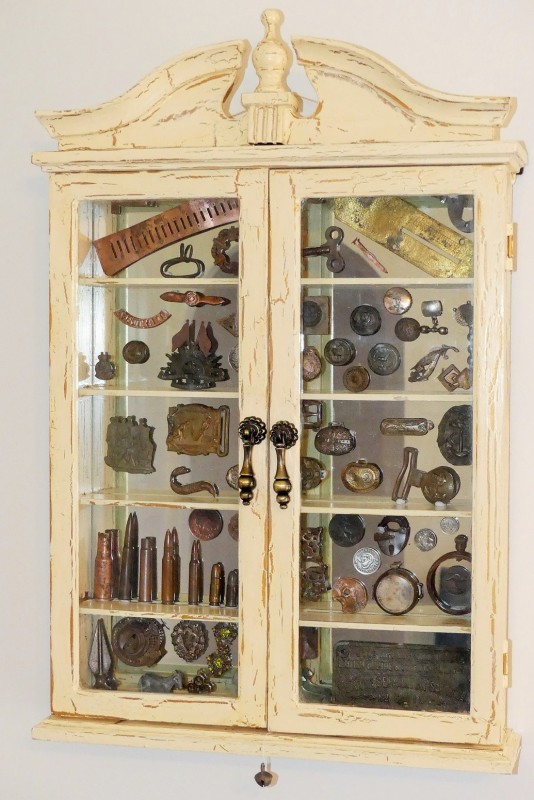

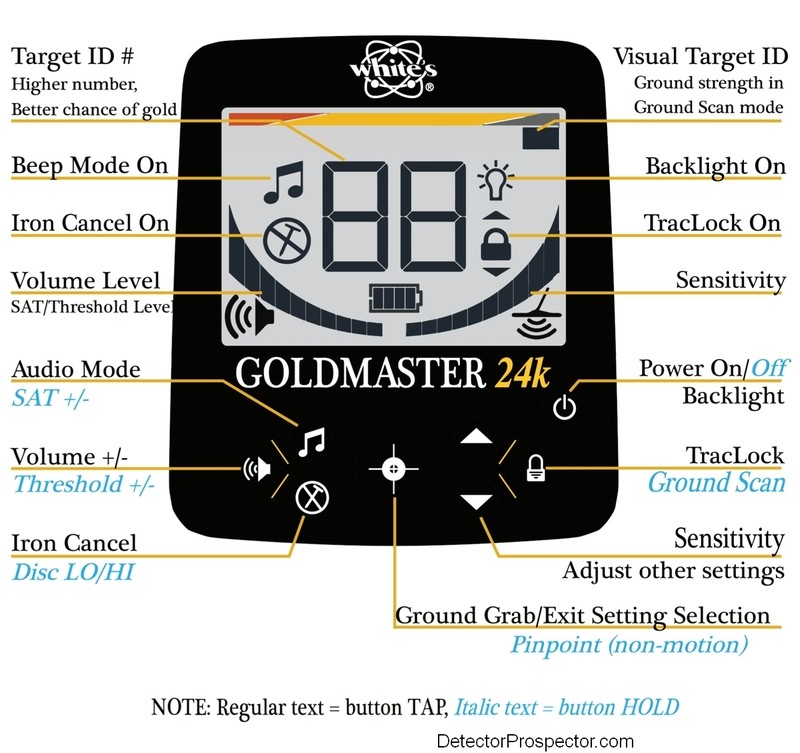
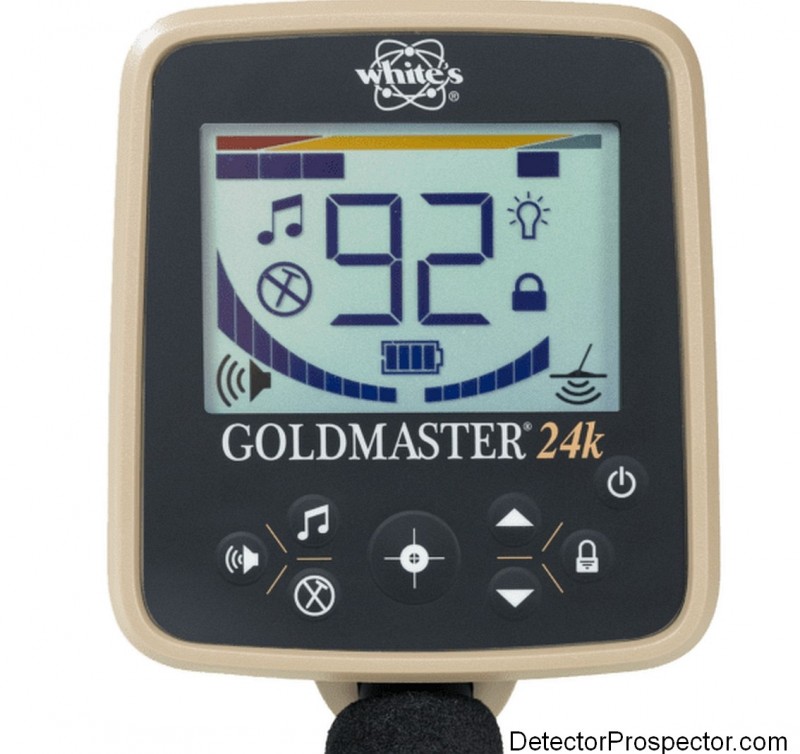
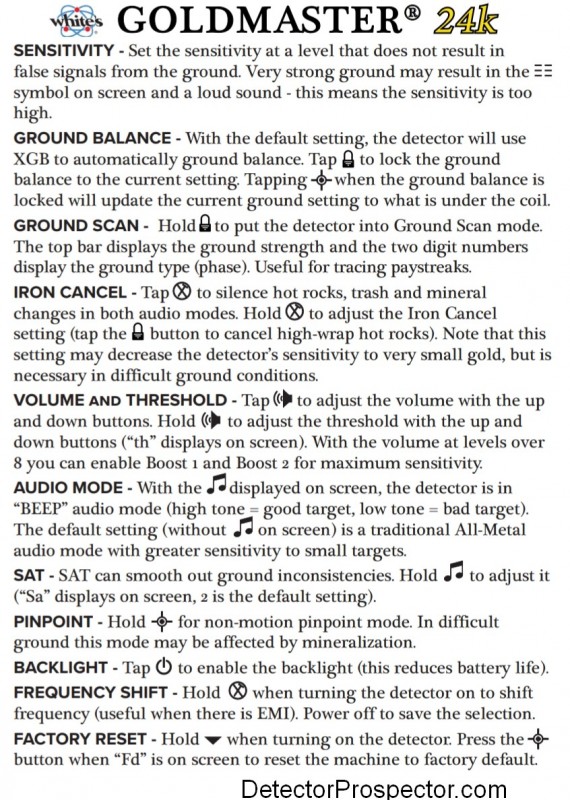

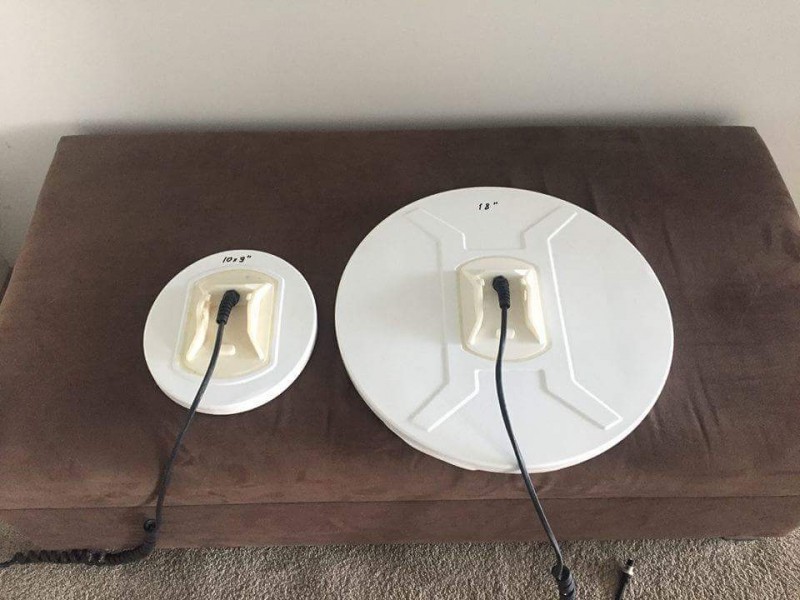
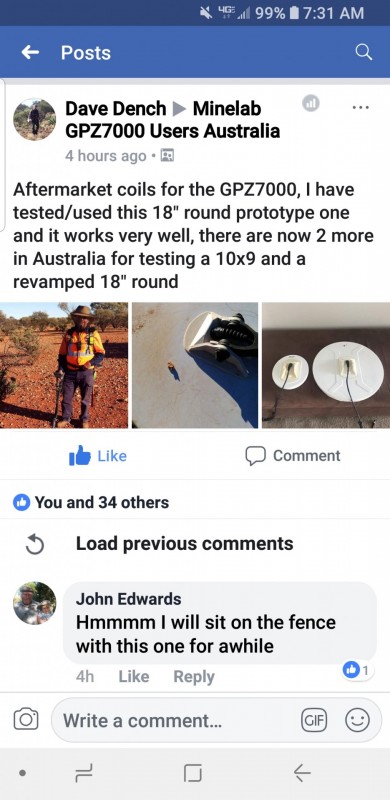


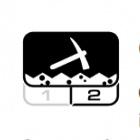
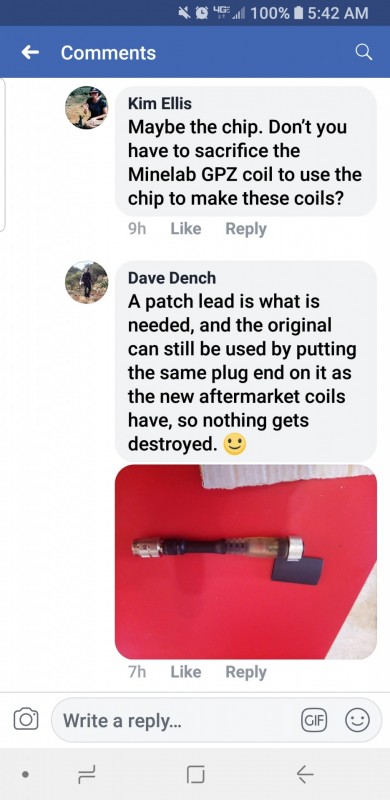
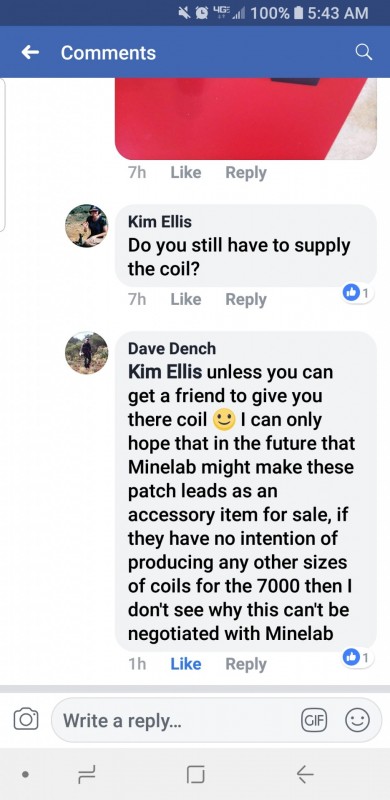
.thumb.jpg.77e4cb5bf39d44bdd2050d2edb7dfdb1.jpg)
